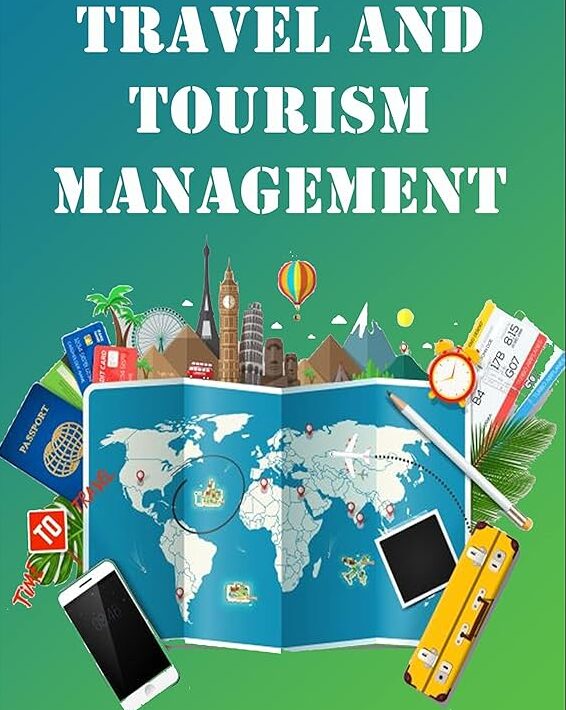Introduction:
Travel industry generates a hug scopes in this country. India, a land of myriad cultures, landscapes, and experiences, has long been a magnet for travelers seeking adventure, spirituality, or simply a taste of its rich heritage. The country’s travel industry is a vibrant tapestry woven with diverse offerings, ranging from ancient historical sites to modern luxury resorts, bustling cities to serene retreats. In this article, we explore a journey through the bustling thoroughfares and hidden gems of India’s travel industry, exploring its evolution, challenges, and promising future.

The Evolution of India’s Travel Industry:
The roots of India’s travel industry can be traced back centuries, with the country’s ancient trade routes attracting merchants, scholars, and explorers from distant lands. However, it wasn’t until the post-independence era that India’s tourism sector began to take shape as a significant contributor to the economy. The establishment of the Ministry of Tourism in 1967 marked a pivotal moment, laying the groundwork for the industry’s growth through strategic planning and promotion.
Over the decades, India’s travel industry has witnessed remarkable evolution, fueled by factors such as liberalization, infrastructure development, and technological advancements. The advent of budget airlines and online booking platforms has democratized travel, making it more accessible to a broader spectrum of society. Additionally, initiatives like the “Incredible India” campaign have played a crucial role in showcasing the country’s diverse attractions on the global stage, attracting millions of tourists annually.

Challenges and Opportunities:
Despite its rapid growth, India’s travel industry faces several challenges that draw attention. Infrastructure bottlenecks, including inadequate transportation networks and accommodation facilities, remain significant hurdles, particularly in remote areas. Moreover, issues such as bureaucratic red tape, safety concerns, and environmental sustainability pose ongoing challenges to industry stakeholders.
However, amidst these challenges lie immense opportunities for innovation and growth. The rise of experiential travel, driven by a growing appetite for authentic cultural experiences, presents a fertile ground for entrepreneurs to create niche offerings tailored to the discerning traveler. Furthermore, the government’s focus on initiatives like “Swadesh Darshan” and “PRASAD” (Pilgrimage Rejuvenation and Spiritual Augmentation Drive) underscores a commitment to developing tourism infrastructure and promoting lesser-known destinations, unlocking new avenues for development.

Emerging Trends and Technologies:
In an era characterized by rapid technological advancement, India’s travel industry is witnessing the emergence of several trends that are reshaping the traveler experience. Artificial intelligence and data analytics are revolutionizing personalized recommendations and customer service, enabling companies to deliver tailored experiences at scale. Virtual reality and augmented reality technologies offer immersive previews of destinations and attractions, allowing travelers to make more informed decisions and enriching their pre-travel experience.
Furthermore, the rise of eco-tourism and sustainable travel practices reflects a growing awareness of environmental conservation among both travelers and industry players. From eco-friendly accommodations to responsible wildlife tourism initiatives, sustainability is increasingly becoming a core consideration in travel planning and operations. This shift not only addresses environmental concerns but also appeals to socially conscious travelers seeking meaningful and responsible experiences.
The Road Ahead:
As India’s travel industry continues to evolve, collaboration and innovation will be key drivers of its success. Public-private partnerships can play a crucial role in addressing infrastructure gaps and fostering sustainable development, while fostering a conducive regulatory environment is essential for nurturing entrepreneurship and investment in the sector. Moreover, leveraging digital technologies and data-driven insights will be paramount in enhancing the overall traveler experience and maintaining India’s competitive edge in the global tourism market.

Conclusion:
India’s travel industry is a tapestry of tradition and innovation, woven with threads of heritage, hospitality, and resilience. While challenges persist, the industry’s trajectory is one of growth and transformation, fueled by a rich tapestry of cultural diversity and natural beauty. As we navigate the dynamic landscape of India’s travel industry, let us embrace its myriad opportunities and embark on a journey of discovery, enriching our lives and leaving footprints of exploration and wonder along the way.
The journey continues, beckoning travelers to embark on new adventures and create lasting memories amidst the timeless allure of India’s landscapes and legacies.
Leave a Reply